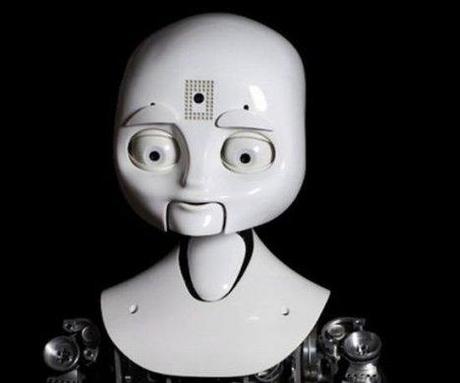
SPAUN (Semantic Pointer Architecture Unified Network) is a model of a functioning brain out of Chris Eliasmith’s group at the University of Waterloo. I first met Chris almost 15 years ago when I visited Charlie Anderson at Washington University, where Chris was a graduate student. He was actually in the philosophy department (and still is) with a decidedly mathematical inclination. SPAUN is described in Chris’s paper in Science (obtain here) and in a forthcoming book. SPAUN can perform 8 fairly diverse and challenging cognitive tasks using 2.5 million neurons with an architecture inspired by the brain. It takes input through visual images and responds by “drawing” with a simulated arm. It decodes images, extracts features and compresses them, stores them in memory, computes with them, and then translates the output into a motor action. It can count, copy, memorize, and do a Raven’s Progressive Matrices task. While it can’t learn novel tasks, it is pretty impressive.
However, what is most impressive to me about SPAUN is not how well it works but that it mostly implements known concepts from neuroscience and machine learning. The main newness was putting it all together. This harkens back to what I called the Hopfield Hypothesis, which is that we already know all the elementary pieces for neural functioning. What we don’t know is how they fit and work together. I think one of the problems in computational neuroscience is that we’re too timid. I first realized this many years ago when I saw a talk by roboticist Rodney Brooks. He showed us robots with very impressive capabilities (this was when he was still at MIT) that were just implementing well-known machine learning rules like back-propagation. I recall thinking that robotics was way ahead of us and that reverse engineering may be harder than engineering. I also think that we will likely construct a fully functioning brain before we understand it. It could be that if you connect enough neurons together that incorporate a set of necessary mechanisms and then expose it to the world, it would start to develop and learn cognitive capabilities. However, it would be as difficult to reverse engineer exactly what this constructed brain was doing as it is to reverse engineer a real brain. It may also be computationally undecidable or intractable to a priori determine the essential set of necessary mechanisms or the number of neurons you need. You might just have to cobble something together and try it out. A saving grace may be that these elements may not be unique. There could be a large family of mechanisms that you could draw from to create a thinking brain.
